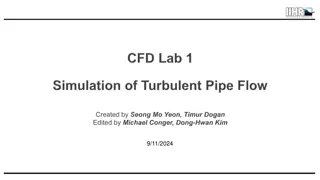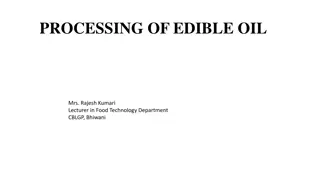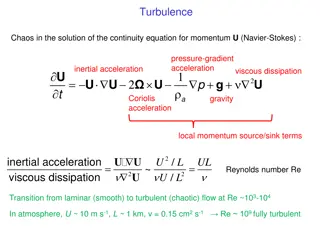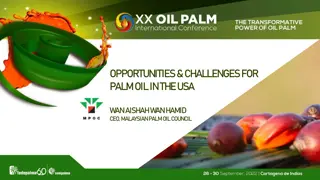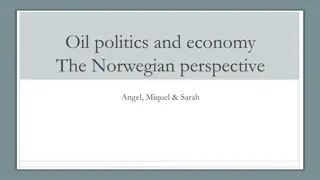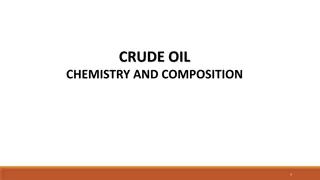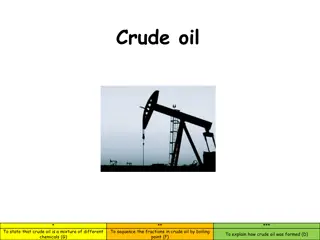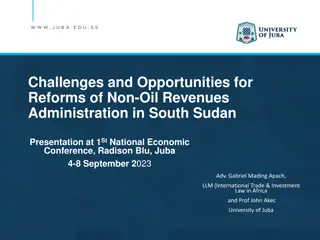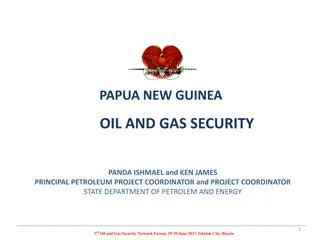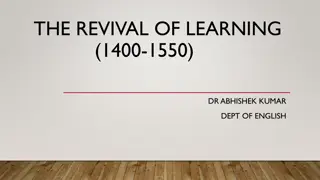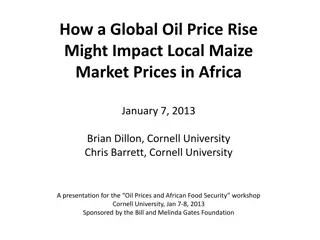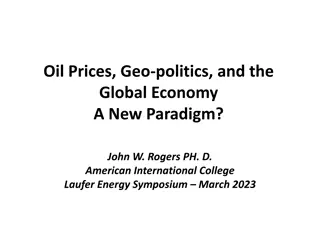Understanding Oil Market Dynamics in Turbulent Times
This presentation by Dr. Bassam Fattouh at the G20 Conference in 2013 delves into the complexities of the oil market, including the speculation versus fundamentals debate, inter-linkages between physical and financial layers, and the role of expectations in oil price formation. The discussion also covers the implications of producer-consumer relations on market stability and highlights the challenges of isolating physical and financial layers in the current pricing regime.
Download Presentation

Please find below an Image/Link to download the presentation.
The content on the website is provided AS IS for your information and personal use only. It may not be sold, licensed, or shared on other websites without obtaining consent from the author. Download presentation by click this link. If you encounter any issues during the download, it is possible that the publisher has removed the file from their server.
E N D
Presentation Transcript
Oil Market Dynamics in Turbulent Times Dr Bassam Fattouh Oxford Institute for Energy Studies Presented at the G20 Conference on Commodity Price Volatility Istanbul, Turkey 13 September 2013
Main Themes The speculation versus fundamentals debate: How useful is this distinction? The inter-linkages between physical and financial layers of the oil market: The implications The role of expectations in the oil price formation How did the uprisings shape these expectations The producer-consumer relations: Source of market stability? Concluding remarks
1. Speculation versus Fundamentals Polarisation of views about key drivers of oil prices Fundamentals Speculation Dichotomy still dominates debate, but is it useful? Assumes a clear dividing line between commercials and non- commercials Financial players don t operate in isolation of physical parameters of the oil market Oil price be sliced into various components reflecting fundamental and non-fundamental factors theoretically weak and empirically difficult to be implemented Assumes that speculators form a homogenous group Financial players are quite diverse Financialisation of crude oil
2. Inter-linkages between Physical and Financial Layers Not possible to isolate the physical layers from the financial layers in the current oil pricing regime Current market fundamentals are never known with certainty Analyze the process of convergence and understand what spot price in context of oil market really means Level of oil price is not most relevant feature in current pricing system price differentials and adjustments in these differentials underlie basis of the current oil pricing system
The Inter-linkages Between Financial and Physical Layers Inter-Dubai Swap Market Forward Dubai Dubai Price Dated Brent Contract For Differences (CFDs) Dubai/Brent Exchange for Physicals (EFPs) Forward Brent Exchange for Physicals (EFPs) Brent Futures Market
3. Expectations in Oil Price Formation Process But what if stories themselves move markets? What if these stories of over-explanation have real effects? What if themselves are a real part of how the economy functions?...The stories no longer merely explain the facts; they are the facts Akerlof and Shiller; Animal Spirit, p.54 Spare Capacity Market fundamentals are tight and likely to tighten further in near future Limited growth in non-OPEC supply (peak oil and/or over-ground constraints) A slowdown in investment and future production in OPEC countries Rapid growth in global oil demand fuelled mainly by non-OECD economies Source: Barclay s Capital, Oil Sketches, March 2011
Current Events in MENA Fuel this Story Libya disruption speeded up the erosion of spare capacity Inability of MENA region to meet the investment requirement and increase production to meet projected global demand increase due to civil unrest/sanctions Reform of prices to slowdown growth in oil domestic consumption will become more difficult after recent political shockwaves affecting ability of key OPEC members to export Response to current events will increase the reservation price required by OPEC member countries Producer-consumer relations can be relied to reduce adjustment costs to physical disruption
4. Producers-Consumer Relations Approval of IEF charter in February 2011 represented a turning point in producer consumer relations In June, IEA decided to release 60 million barrels of oil from emergency stocks Release of strategic reserves not part of a coordinated effort between producers and consumers Signal weak and confusing and created chaos in market Impact of producers and consumers actions not been neutral on oil price dynamics. Revealed a rift in producer producer and producer consumer relations Revealed a market in which its key players have failed to coordinate their efforts in the face of a serious disruption Rather than smoothing the cost of adjustment, they exacerbated price volatility
5. Concluding Remarks Factors contributing to oil price volatility are complex and inter- related Separation of physical layer from financial layers of market is myth Any measures to improve functioning of financial layers and increase their transparency are welcome but if not implemented properly could make matters worse Producer-consumer relations matter and how these relations perceived by market affect oil price behaviour. Most important dimension is how to change dominant story in oil market: Is there an alternative story?


